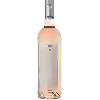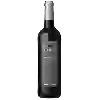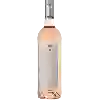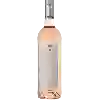
Domaine GuilbertBlanc
This wine generally goes well with
Details and technical informations about Domaine Guilbert's Blanc.
Discover the grape variety: Panse muscade
Panse muscade is a grape variety that originated in France (Provence). It produces a variety of grape specially used for wine making. It is rare to find this grape to eat on our tables. We find the Panse muscade white in the vineyards of Provence and Corsica.
Informations about the Domaine Guilbert
The Domaine Guilbert is one of of the world's greatest estates. It offers 3 wines for sale in the of Alpilles to come and discover on site or to buy online.
The wine region of Alpilles
The wine region of Alpilles is located in the region of Méditerranée of Vin de Pays of France. Wineries and vineyards like the Domaine de Trévallon or the Domaine de Trévallon produce mainly wines red, pink and white. The most planted grape varieties in the region of Alpilles are Merlot, Cabernet-Sauvignon and Roussanne, they are then used in wines in blends or as a single variety. On the nose of Alpilles often reveals types of flavors of peach, black fruits or white pepper and sometimes also flavors of cassis, clove or mushroom.
The wine region of Méditerranée
Méditérranée is a PGI title that covers wines produced in a large area of the South-eastern coast of France, roughly corresponding to the wine region of Provence but also including Part of the Rhône Valley. The PGI shares its territory with multiple AOC appellations as varied as Châteauneuf-du-Pape, Bandol and Côtes de Provence. The PGI Méditérranée catchment area extends over 10 departments (including the two on the island of Corsica), as well as smaller parts of the Isère, Loire and Rhône departments. Viticulture is essential to the culture and economy of this part of France.
The word of the wine: Tranquil (wine)
Refers to a non-sparkling wine.










